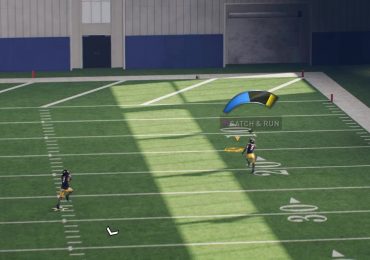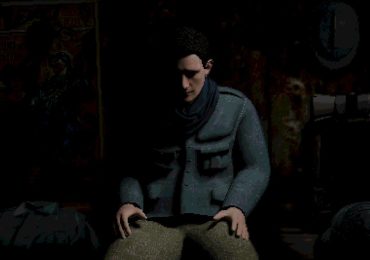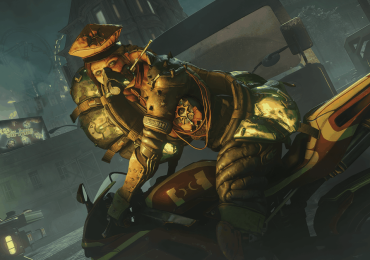Your shadow is one of the very few things that stays with you throughout your entire life. You may only notice it in harsh light, or when it makes funny shapes, but it’s always there. So what happens when it becomes unmoored from you? This is the idea that developers Ewoud van der Werf and Nils Slijkerman take on in Schim, a study of light and shadow.
The game begins with a child whose shadow can hop around and explore on its own, but which never goes too far from its person. It follows that person through their lifetime — playtime in the park, heartbreak, college graduation — all of which plays out through dialogue, with the player controlling the shadow to get the person from place to place. The shadow hops alongside its person until one really bad day: The person gets fired from their job, then trips and falls on their way home. The fall shakes the shadow loose, and after this point, the person goes on without it. The rest of Schim is the shadow desperately making its way back to its person, always slightly behind them as their life continues to change — both shadow and person picking up the pieces.

Mechanically, Schim is a 3D platforming game in which the shadow — who is frog-shaped when unattached from their person — hops between other shadows in the world around them. You can do big jumps and little jumps, perfectly timing them to ensure you’re in the right place at the right time. If you miss the shadow you’re jumping towards, you’ll get sent back to an earlier shadow; usually, it’s not too far, but moving shadows don’t count, so if you mess up, you could get sent back pretty far. Schim’s platforming and movement puzzles are relatively simple, but I’ve often found myself impressed with how clever the challenges are. In one level, the shadow has to manipulate traffic lights — turning them on and off — to get the car’s shadows in the correct places to reach a certain area. In another, Schim plays like a reverse Frogger as the shadow hops from box to box on a moving conveyor belt. But my favorite levels are the ones that take place at night, where streetlights, cars, bikes, and pedestrians cast directional shadows that move and change shape. The game’s use of color, shadow, and light is essential in conveying Schim’s story and emotion; these elements flip back and forth seamlessly to say something different about each scene.
On its own, Schim’s gameplay might have been too simple. But paired with its subtle storytelling and striking art style, Schim stands alone: I’ve never experienced anything like it. It feels like a really special game to play, one that could have very easily relied on its distinct art style and environment alone, but hasn’t. The overarching story and how the gameplay is tied to it helps Schim rise above just its aesthetics, giving it a throughline that flows just as seamlessly as the shadow itself. The startling use of light and shadow sets the tone for a story I read as melancholy, but I can imagine a person playing who interprets it in another way. This is a strength and not a flaw; it feels like a masterwork in storytelling to create an experience that’s both clear and unique to each player.
Schim released July 18 on Nintendo Switch, PlayStation 4, PlayStation 5, Windows PC, Xbox One, and Xbox Series X. The game was reviewed on Steam Deck using a pre-release download code provided by Playism. Vox Media has affiliate partnerships. These do not influence editorial content, though Vox Media may earn commissions for products purchased via affiliate links. You can find additional information about Polygon’s ethics policy here.








